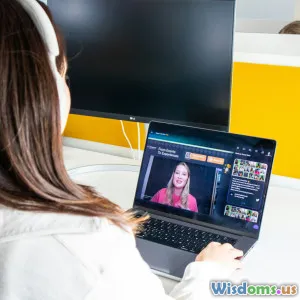
Adapting Teaching to Mixed Learning Styles Effectively
8 min read Discover strategies for effectively adapting teaching methods to diverse learning styles, enhancing engagement and comprehension in mixed-style classrooms. (0 Reviews)
Adapting Teaching to Mixed Learning Styles Effectively
In today’s classrooms, diversity is more than a matter of culture or background—it extends profoundly into the ways students absorb and process information. Traditional one-size-fits-all teaching methods are becoming increasingly obsolete as educators recognize the variety of learning styles that students bring into the classroom. But what does it truly mean to adapt teaching to mixed learning styles effectively? This article delves deeply into understanding diverse learning styles and offers actionable strategies to create an inclusive, engaging, and effective learning environment for all students.
Understanding Mixed Learning Styles: Foundations and Frameworks
What Are Learning Styles?
Learning styles are various approaches or preferences individuals have when acquiring new information or mastering skills. Though the concept has evolved and sometimes sparked debate among education experts, learning styles remain a practical framework to tailor instructions in ways that resonate more deeply with students.
Common models include:
- Visual learners: Prefer images, charts, diagrams, and spatial understanding.
- Auditory learners: Engage best through listening to lectures, discussions, and audio materials.
- Kinesthetic learners: Thrive with hands-on activities, movement, and tactile experiences.
- Reading/Writing learners: Favor reading texts and writing notes as main learning methods.
The Case for Adapting to Mixed Styles
In mixed groups, students don't align with a single style – they exhibit combinations or preferences that require multifaceted approaches. Research shows that mismatching teaching and learning styles can reduce retention rates and engagement. According to a 2013 study in the Journal of Educational Psychology, students exposed to multimodal instruction retained concept knowledge 30% more effectively than those with unidimensional teaching.
Understanding this diversity is not about labeling students but empowering teachers to broaden their instructional repertoire.
Practical Strategies to Adapt Teaching Effectively
1. Incorporate Multisensory Teaching Techniques
The fundamental way to address mixed learning styles is through multisensory engagement.
- Use visual aids like infographics, videos, and slides alongside oral explanations to simultaneously engage visual and auditory learners.
- Integrate interactive activities such as experiments, building models, or role-playing, which support kinesthetic learners' needs.
Example: A biology teacher discussing the structure of DNA might use a detailed diagram (visual), lecture the main concepts (auditory), and allow students to construct DNA models with colored beads (kinesthetic).
2. Differentiate Instruction
Tailoring content to different learner profiles doesn’t mean reinventing entire lessons but providing options and flexible pathways.
- Offer lecture recordings or podcasts for auditory learners who may want to revisit material.
- Provide annotated handouts or textual materials for reading/writing learners.
- Use tech tools like learning management systems that allow selecting preferred formats, e.g., videos, quizzes, or flashcards.
Differentiated instruction ultimately promotes autonomy, allowing students to engage in the way they learn best.
3. Create Collaborative Learning Environments
Mixed learning styles often find their strength in collaboration.
Group-based projects mix learners who gravitate toward different modalities. Visual and kinesthetic learners can devise presentations, auditory learners can lead discussions, and reading/writing learners handle research and documentation.
A 2017 case study at a middle school in Finland found that mixed-style collaboration improved peer engagement and collective problem-solving skills by 25%.
4. Utilize Formative Assessments
Regular assessments that provide qualitative and quantitative feedback guide adaptations dynamically.
- Quizzes can incorporate varied formats (multiple choice, diagrams to label, oral explanations).
- Reflection journals allow reading/writing learners to process content deeply while giving teachers insights into individual preferences.
Formative assessments help educators recognize which approaches work and where adjustments are required.
5. Leverage Technology for Personalization
Digital platforms offer unprecedented opportunities to customize learning experiences.
- Adaptive learning software personalizes paths based on performance and preferences.
- Tools like Nearpod, Pear Deck, or Kahoot! support multimodal engagement and real-time adjustments.
Educator Sarah Johnson notes, “Technology has been a game-changer, especially for mixed learning classrooms. It allows one lesson to reach diverse learners simultaneously with meaningful interactivity.”
Challenges and Solutions in Mixed Learning Environments
Challenge: Time Constraints
Solution: Use blended learning models where online modules prepare students before class, freeing up in-person time for discussion and hands-on activities.
Challenge: Resource Availability
Solution: Start small—integrate low-cost or no-cost digital tools and leverage community resources or peer teaching.
Challenge: Overgeneralization of Learning Styles
Solution: Avoid pigeonholing students. Combine learning styles with skills assessments, interests, and students’ voices to guide instruction.
Real-World Impact: Case Studies
Case Study 1: A Multimodal Approach Boosts STEM Interest
In a New York high school, science teachers introduced an integrated learning system where students engaged with content via videos, labs, discussions, and writing assignments. Over a year, STEM course enrollment rose by 40%, and average test scores improved by 15%.
Case Study 2: Blended Learning in Adult Education
An adult literacy program implementing varied instructional methods (audio tapes, tactile exercises, and reading) saw retention improve from 55% to 78%, showing how mixed style adaptation can extend beyond conventional schools.
Conclusion: Moving Towards Inclusivity and Engagement
Adapting teaching methods to accommodate mixed learning styles isn't merely an educational trend—it represents a shift toward inclusive, responsive teaching that respects individual differences. Given the compelling benefits, from increased engagement to higher retention, educators are encouraged to embrace and experiment with diverse instructional strategies.
By understanding learning styles, employing multisensory methods, leveraging technology, and continuously assessing student needs, teachers can create rich learning environments where every learner not only understands but thrives. The future of education lies in such adaptive, learner-centric approaches.
As education visionary Rita Dunn once said, "Understanding learning styles unlocks doors to deeper learning; when we open these doors for all, the classroom transforms into a vibrant community of success."
Professors, teachers, and trainers at every level stand poised to reimagine their teaching—meeting learners where they are, and guiding them toward their full potential.
Rate the Post
User Reviews
Other posts in Learning Styles & Approaches
Popular Posts

















